





7 weed plants useful to health
What is in our understanding weeds? It plants which are considered to be suitable only for compost pits and feeding of animals. Meanwhile, among the weeds growing literally under legs it is possible to find the mass of the officinal herbs having invaluable advantage for human health. It is possible not only to be treated by most of them, using as broths, tinctures, compresses, but also to accept in food as usual products. Let's consider 8 extended and often ignored by people plants which can bring benefit for our organism.
1. Nettle
The nettle is considered by right the most valuable plant with structure, almost ideal for human health. Several decades ago leaves of a young nettle in salads, drinks, first courses could be met practically on each table. A nettle – the undisputed leader on the content of vitamin C (is twice more, than in lemons), carotene, and also some microelements (iron, copper, chrome, manganese, etc.) among the majority of vegetables and fruit. High content of organic acids (gallusovy, ant) does a nettle by an effective remedy for immunity strengthening. So, decoction from this plant is recommended to accept inside for increase in body resistance to pathogenic microorganisms and parasites, and also as fortifying means during the postoperative period.
The nettle and in treatment of gastrointestinal illnesses, catarrhal, gynecologic diseases is irreplaceable. Especially effective use of a plant in cosmetology: broth of a nettle is famous for what strengthens hair and saves from dandruff. It is important to remember that the people having thrombophlebitis, atherosclerosis of vessels, a hypertension and also pregnant women should use a nettle with care.
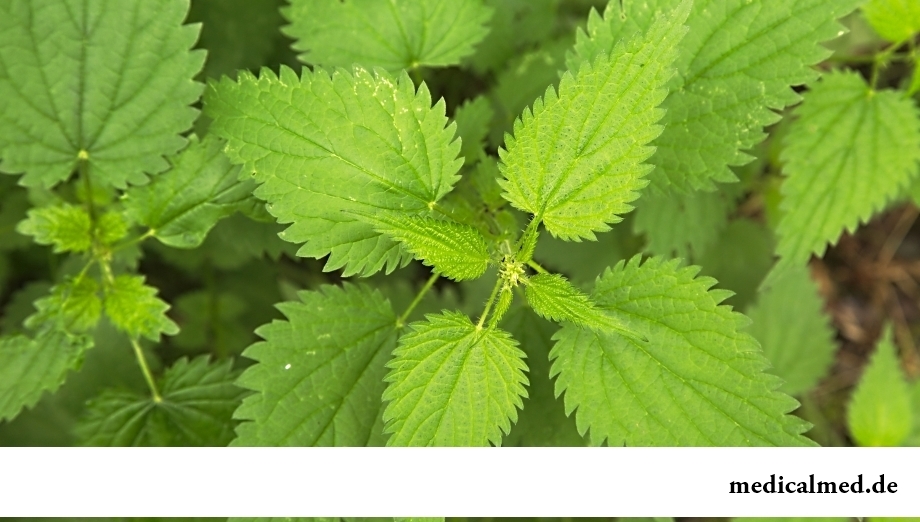
2. Plantain
One more useful weeds which are easy for finding on a footpath near the house – a plantain. Antiseptic property of a plant which practically each person at least put once to a wound for bystry healing is widely known. The plantain is obliged by the action to presence at its structure of S-metilmetionina or vitamin U – the substance having the expressed wound healing effect. Thanks to vitamin U the plant is irreplaceable and in treatment of peptic ulcers of a digestive tract (against the background of the lowered acidity) − for this purpose 5-7 g of a dry plantain are made in a glass of water and accepted 3 times a day within 2-3 months.
Also the sedative (calming) property of the plantain which is considered as natural antidepressant is also remarkable. The plant regulates exchange of the cholesterol which is responsible for production of "joy hormone" of serotonin, normalizes mood and besides neutralizes the toxins getting to an organism.
Use of a plantain is inside contraindicated to people with hypersecretion of a gastric juice (hyperoxemia) and tendency to formation of blood clots.
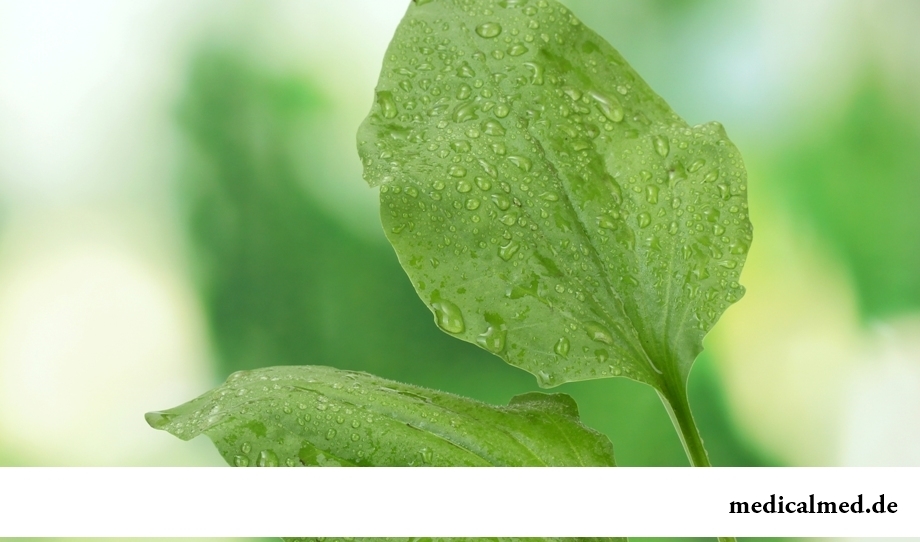
3. Wheat grass
This evergreen weed against which distribution all gardeners of a midland of Russia fight, actually – a medical plant to which on forces elimination of many illnesses. Not accidentally the wheat grass is chosen by animals for regular clarification of a stomach. Despite the ordinary-looking look, this plant – one of most effective sudorific, diuretic, expectorant, antiinflammatory, enveloping and even easy purgatives. A dry plant decoction (25 g on 200 ml of boiled water) is used inside at bronchitis, rheumatism, hemorrhoids, pyelonephritis, a pulmonary tuberculosis, and bathtubs from rhizomes of a wheat grass successfully treat the majority of diseases of skin.
As well as any plant, at the use inside the wheat grass has contraindications: the grass cannot be drunk at a peptic ulcer of a stomach, pancreatitis, diarrhea and hypotonia.
4. Burdock
Salutary properties of a burdock are known long ago: for a long time from wide leaves of a plant cooked salads, and roots were fried and used for a zavarivaniye of coffee drink. Today the burdock is grown up in Japan as vegetable culture which of root crops cook soups rich with useful substances, garnishes, flat cakes. It is considered that the regular use of a burdock in food is excellent prevention of diseases of digestive tract, a diabetes mellitus, nephrolithiasis, helminthic invasions. Also antineoplastic activity of the plant suppressing reproduction of cancer cells is experimentally proved.
Outwardly burdock juice is widely used at burns, grazes, cuts, inflammations, a furunculosis and other skin diseases. Broth of a plant is almost harmless, however it is not recommended to use at pregnancy and feeding by a breast.

5. Wood louse
Weeding a wood louse – the branchy plant preferring grow on the wet soil – we do not even suspect of what valuable medicinal and vitamin raw materials we get rid. The nature awarded a plant with rich structure: so, the content of vitamin C in a wood louse is one and a half times more, than in lemons, and only 20 g of a grass contain standard daily rate of carotene – the substance which is responsible for a set of biological processes in an organism.
Addition of a fresh wood louse in salads allows to cope with the illnesses of a thyroid gland, digestive tract, a hypertension, chest pains, and also breakdown, a scurvy and anemia. Besides, the plant is famous for the cholagogue and antiseptic properties. Thanks to hypoallergenicity and harmlessness of a wood louse it can be used for treatment of small children – however the people having hypotonia should remember its ability to reduce pressure.
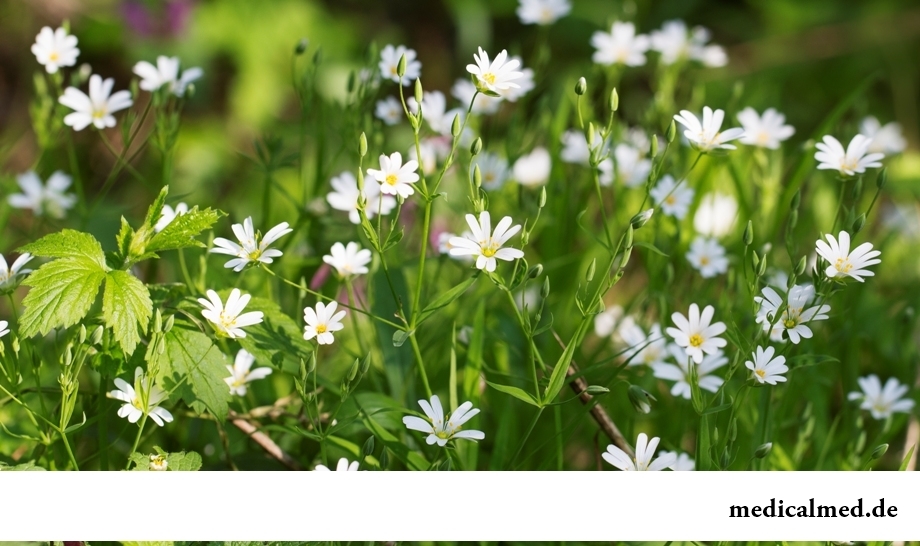
6. Celandine
Celandine – the noxious plant which is mistakenly ranked to weed which at skillful use can save the person from many diseases. Its outside use, as the wound healing, bactericidal, antifungal means promoting clarification of skin is the most effective. For these purposes use bathtubs with a celandine, tincture and its lacteal juice in pure form. It is possible to call this unpretentious weed effective medicine against stomach diseases, bones, joints, female generative organs and a nervous system. Besides, its anticarcinogen properties are scientifically proved. Use inside celandine tincture carefully, since 3-5 drops a day, gradually, within 4 months leading up their quantity to 50. It is important to know that exceeding of a dosage can cause disturbances of a cordial rhythm, emergence of spasms and even death from a cardiac standstill therefore has to appoint medicine and to control its use only the doctor.
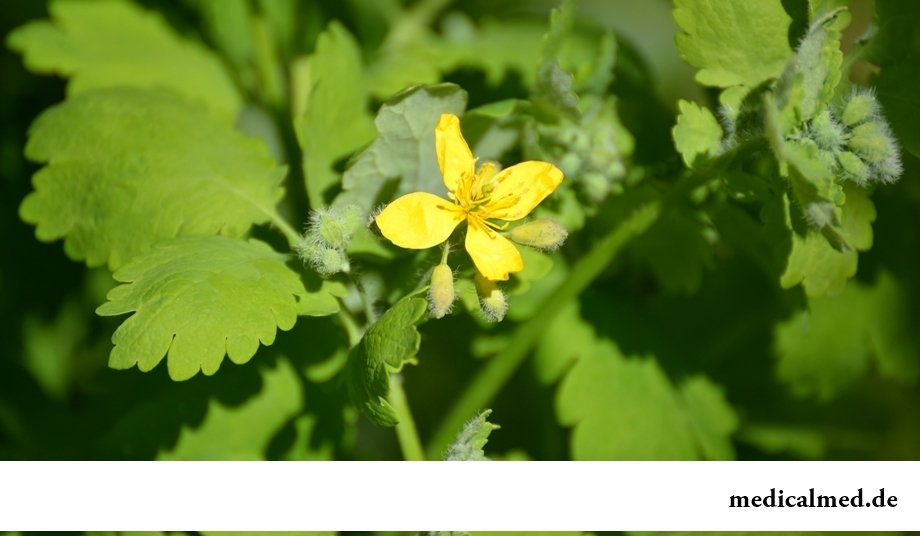
7. Orach
– "a flour grass" which is ruthlessly destroyed by all gardeners of the country – today the little know of useful properties of an orach. However still our ancestors noticed that the plant rich with a protein on nutritiousness a little than concedes to proteins of animal origin. The flat cakes saving people from starvation were made of an orach in lean and military years. Fresh leaves of an orach can be used in salads, borsches, soups, garnishes, and also to serve as the diuretic, expectorant, antibacterial and carminative agent which is effectively clearing an organism of slags. And poultices from leaves of a plant gouty tumors, hemorrhoids, hypostases of joints treat. It is important to remember that, despite its numerous useful properties, it is better for people not to abuse the use of an orach with chronic illnesses of digestive tract, and also urolithic and cholelithic diseases.
If to smile all twice a day – it is possible to lower blood pressure and to reduce risk of developing of heart attacks and strokes.

For anybody not a secret that our country is one of the most "drinking" in the world. At clear understanding of that the use of strong...
Section: Articles about health
The stroke is one of the most widespread diseases of the person, annually in the world about 6 million cases of this pathology are registered. According to medical statistics, strokes occur almost three times more often than myocardial infarctions. Disease otno...
Section: Articles about health
Dietary supplements (dietary supplements) for the last decades were so thoroughly included into our life that, apparently, it is already impossible to find the person who at least once did not try them. At the same time, most of our compatriots have a vague idea of what dietary supplements as they affect a human body consist of and what differ from the real medicines in. Let's try to understand these questions, and at the same time and to understand, such additives are how necessary for us....
Section: Articles about health
The person, as well as all other beings living on our planet feels weather changing. It is normal meteosensitivity, not...
Section: Articles about health
"Epilepsy" doctors made the diagnosis in antique times. Displays of an illness and pattern of its development are very well studied. However for nonspecialists this disease remains to not less mysterious, than in the ancient time. Many delusions are connected with epilepsy...
Section: Articles about health
Scientists always aimed to offer fundamental explanations for medical problems. Their theories formed the basis of modern methods of treatment of the hardest pathologies and helped to save a set of lives. However stories are known also such theoretical constructions, following to which brought to mankind of a trouble and torture, ruined destinies and health of many people....
Section: Articles about health
Among a set of the perfumery and cosmetic goods which are released today the special group is made by the means containing anti-bacterial...
Section: Articles about health
For the person who daily since morning gathers for work it is very important to wake up vigorous and ready by day of work. Actually, each of us experiences difficulties with this, at first sight, simple business from time to time. On a condition of an organism after ночн...
Section: Articles about health
The business lady, the become mother, it is necessary to solve an array of problems. But of them is main: how to combine the beloved child and work? What traps trap the working mother and how she needs to behave?...
Section: Slideshow
All diseases from nerves – in this joke a big element of truth, are said by doctors. Constant stresses lead body to decrease in protective forces...
Section: Articles about health
Herpes simplex of the first type (the infectious disease which is shown periodic bubble rashes on lips is called) – one of the most widespread illnesses. Statistically, only 5% of inhabitants of our planet are unreceptive to its activator, and...
Section: Articles about health
Household skills which to us so diligently imparted in the childhood it appears, not always bring only benefit. According to results of the last researches, some habits which for a long time were considered useful and even necessary can become the reason of serious indispositions. Here only seven the most widespread of them....
Section: Articles about health
The Genetically Modified Organisms (GMO) are plants or animals (as a rule, agricultural) in whose genotype...
Section: Articles about health
Proofs of efficiency of Mildronate at treatment of coronary heart disease with stenocardia can be found in many publications of the end of the twentieth century. Researches were conducted since 1984, including placebo - controlled effects. In total клиничес...
Section: Articles about health
Shops of household appliances offer us the huge choice of various devices for the house. Whether there are among this abundance devices which not only facilitate house work, but also help to keep health of the person? Of course, and we will tell about them today....
Section: Articles about health
The phenomenon of improvement of a condition of the patients at administration of drugs who are not containing active agents, so-called effect of placebo is known...
Section: Articles about health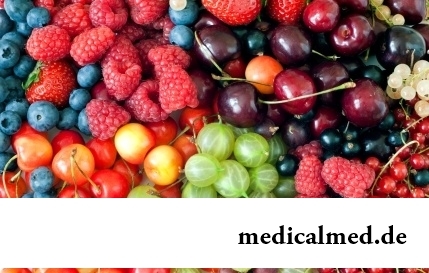
All the known slogan "Protect Men!" arose not from scratch. In a sense, the nature created men much less adapted for vital disorders, than it seems at first sight. Statistically, men are ill more often...
Section: Articles about health
The naturopathy sometimes moves as the new direction of medicine, something like fashionable hobby, and there is nothing farther from the truth. This most ancient direction, the word "naturopathy" is translated as "treatment by the nature", and, no doubt, treatment by natural gifts was the first and only, available to the person in ancient times. Despite modern achievements of medicine, the naturopathy remains urgent and today, anyway the person - a part of the nature, and природн...
Section: Articles about health
Beauty shop – the place which is associated only with positive emotions: joy, pleasure, relaxation. One...
Section: Articles about health
Each of us repeatedly noticed that the people having the same passport age are sometimes not similar on one-years at all. One at the age of 40-45 years already looks almost an old man, and another and in 60 is young, vigorous and full of life. The matter is that state нашег...
Section: Articles about health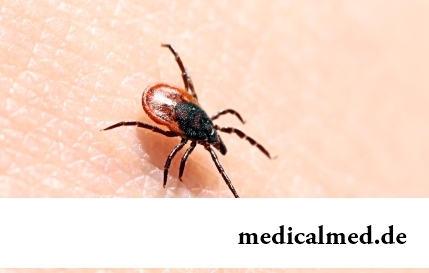
Tick-borne encephalitis – one of the most dangerous viral diseases which causative agents transfer and is given to people by ixodic mites. These are the small blood-sicking insects living in the considerable territory of our country. The person bitten by a tick can catch also erlikhiozy, bartonnelezy, babeziozy, mycoplasmosis and Lyme's disease. As well as encephalitis, these illnesses affect the central nervous system, and as specific antiviral therapy does not exist, the forecast very to a neuta...
Section: Articles about health
Modern footwear is extremely various. It stopped being only protection for legs long ago. Today shoes, boots, barefoot persons in...
Section: Articles about health
Is told about advantage of domestic animals for development of the child much. But many parents nevertheless do not hurry to bring pets as are afraid that they can do harm to health of children. What troubles can really trap kids and how to make with...
Section: Articles about health
According to data of World Health Organization, the cataract is diagnosed almost for 7% of the population of Earth. The statistics of incidence is considered not full as at an initial stage the illness, as a rule, does not cause to the person of special inconveniences, and many diseased sees doctors not at once. The cataract is not only one of the most widespread ophthalmologic illnesses, but also the reason of a half of cases of loss of sight....
Section: Articles about health
Condition of lips (their morbidity, outward) – one of indicators of health of the person. Peeling, dryness, pallor, and also трещ...
Section: Articles about health
Nightmares belong to the most unpleasant frustration. Statistically, they happen at 4% of adults, and almost at 70% of children and teenagers. During a nightmare of people dreams himself in extremely difficult, life-threatening situation. It wakens suddenly, in...
Section: Articles about health
No, probably, the person who would not have cold. Cold, cough, a headache – these symptoms are known to everyone. The peak of catarrhal diseases is the share of fall. SARS already came to schools and kindergartens, flu slowly makes the way to the cities, in a word, winter close!...
Section: Articles about health
